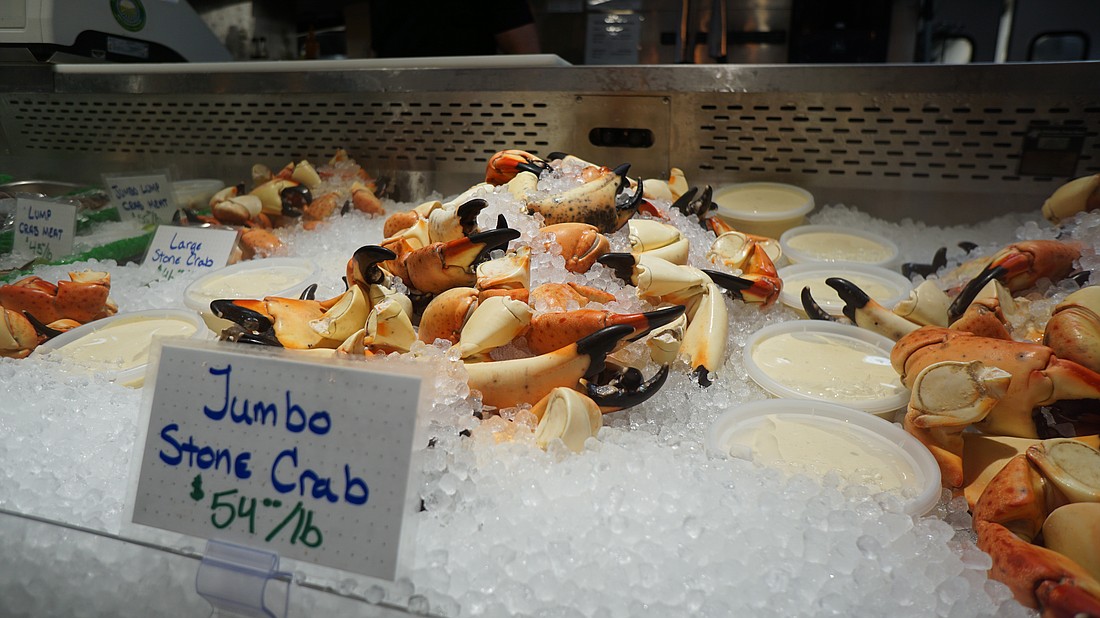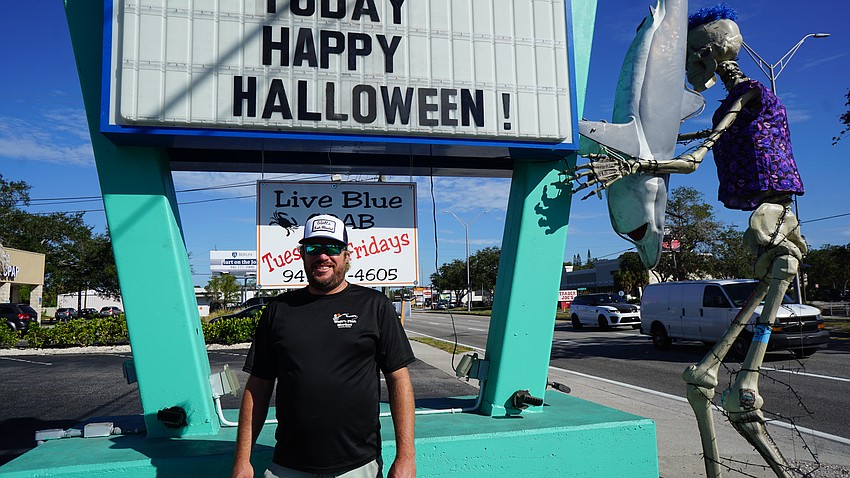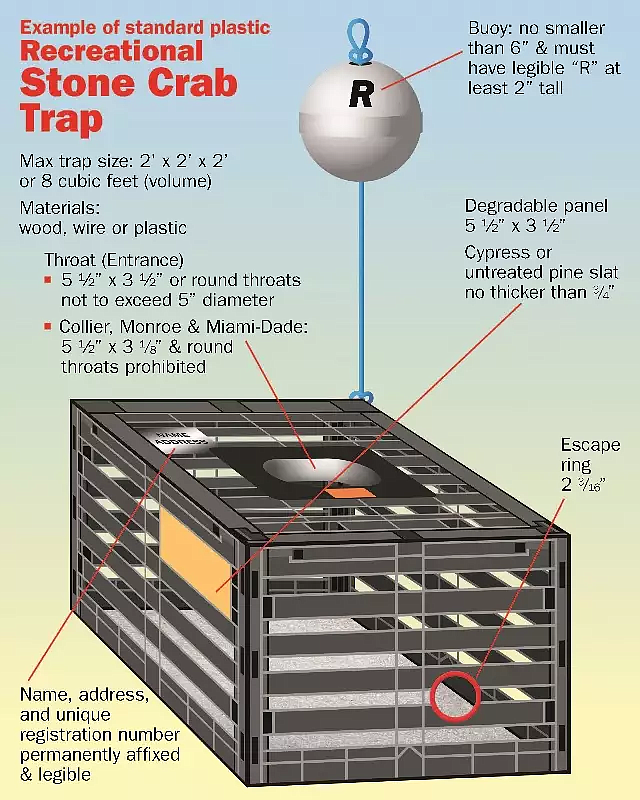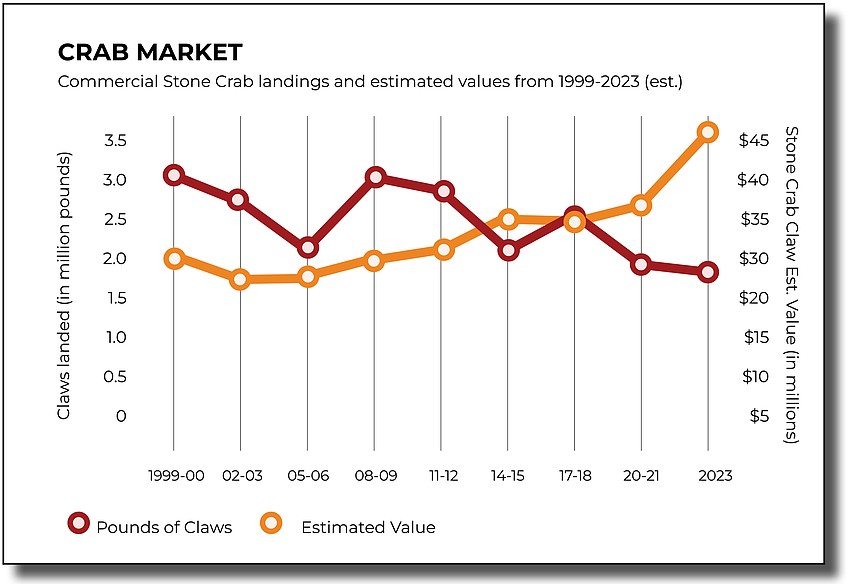- May 2, 2025
-
-
Loading

Loading

For Floridians, October has one more holiday than what might be on most calendars: the start of stone crab season.
Starting Oct. 15, recreational and commercial fishermen are able to harvest the species that holds a spot as one of the five most important fisheries in Florida, according to the Florida Fish and Wildlife Conservation Commission.
Although stone crabs are found from North Carolina to Belize, 99% of the stone crab harvest for the entire United States come from Florida.
And this year, the FWC began implementing new regulations in an effort to conserve the longevity of this important fishery.
Ryan Gandy is part of the Invertebrate Fisheries Research team with the FWC, and he specializes in stone crabs.
He’s been with the FWC for 15 years.
In a recent report given in October, which also saw the adoption of the new regulations, the FWC released a graph that outlines the commercial harvest for Florida’s stone crab fishery.

The graph shows landings — which are fishermen's hauls — measured in millions of pounds of claws. Although the landings appear to go through various periods of highs and lows, there has been a long-term decline in landings since about 2000.
The fishery spiked in the '80s and '90s, accounting for the increase in the graph right before the year 2000.
“As the fishery ages, you see a decline in catch over time,” Gandy said. “That’s a normal thing.”
In the last five years, Gandy said researchers have noticed the amount of stone crabs caught has leveled out.
“Some recent population assessments say we’re probably in a good spot for this fishery, and that we’re taking out the maximum amount of biomass we can in any year,” Gandy said.
But, just because the fishery is in a “good spot” doesn’t mean it’s a free-for-all. In fact, the FWC thought it was important to set up new regulations for the stone crab traps.
Enter: escape rings.
These escape rings have long been used in trap fisheries, and were implemented a long time ago in Florida’s blue crab traps.

Escape rings are positive for a few different reasons.
First, the rings act as a way for undersized crabs to escape. Stone crabs must have claws of at least 2 ⅞ inches to be harvested.
Stone crabs' claws are harvested by carefully breaking them off of the crab. The crabs have the ability to grow their claws back, through multiple stages of molting. This could take many months.
While both claws can legally be harvested, FWC’s website says this leaves the crab with little way of defending itself.
Gandy said that just by containing undersized crabs in a trap, there can be up to a 13% mortality rate.
Lower mortality rates in juvenile crabs can help bolster the spawning stock for following years, thus potentially leading to more successful seasons in the future.
Another upside to the escape rings is that they limit the amount of bycatch.
Bycatch refers to any of the unwanted, or extra, biomass that is captured. If a crabber places a trap in the water, when it’s pulled up the trap may contain stone crabs along with other marine life like blue crabs, starfishes and other fish.
With less bycatch means less unwanted stuff to pick through.
“When a crabber pulls that trap up onto the deck, the first thing they notice, whether it’s a blue crab fishery or a stone crab fishery…there’s a lot less work to do to get to the legal crabs that they’re trying to catch,” Gandy said. “Because they don’t have to clean all that biomass out of the trap.”
This year, the escape rings are mandatory. Gandy said most of these will be retrofitted to existing traps.
Next year, though, clarification will be added as to how and where the escape rings can be installed.
Gandy said his department did about six years of testing, working with commercial fishermen, to verify the ring would be a benefit, and narrow down exactly what size.
In testing, Gandy said commercial fishermen responded with a lot of good feedback.
“It’s less labor that they have on the back of the boat, and they’re actually seeing crabs leaving,” Gandy said. “Those juveniles figured out how to get out of the hole and are able to leave.”
The FWC conducts most of its data through commercial fishermen.
In the 1980s, trip tickets became mandatory for commercial fisheries throughout Florida. Trip tickets provide FWC researchers with valuable data, such as where the landings were caught, weight of the total landings, grade, sizes and the current market price.
“What this does is, it is a way for commercial fishermen to provide really vital data to understand where the catch is coming from and how much,” Gandy said.
On the recreational side, both stone crab and blue crab traps need to be registered with the FWC. Then, the permit will give fishermen a unique ID number to be tagged with.
The purpose, according to Gandy, is for the FWC to have an idea of how many recreational traps are out there.
“In a fishery that is highly exploited like stone crab, it’s very sensitive to the amount of withdrawals,” Gandy said.
He also mentioned that regulations usually take anywhere from three to five years to “settle out.” After that, then the researchers can really start looking at the data and seeing if any new trends emerge.
In a recent study done by the FWC that tested the escape rings in stone crab traps, researchers found that the rings resulted in a 24% reduction in catch of undersized crabs and a 76% reduction in bycatch.
For Brett Wallin, his family-owned business Walt’s Fish Market is more than a restaurant, it’s an industry — one that he’s passionate about conserving.
Wallin is a fourth generation fisherman and owner of the market. He started learning about the industry at a young age, doing internships with other crabbers to learn the trade.
Now, he runs the Walt’s business while also being a part of the crab catching.
“There’s not much of that at all anymore,” Wallin said.

Wallin operates about 1,200 traps during stone crab season. His crab boat can hold up to 250 at a time and is docked right in his Siesta Key backyard.
Another fisherman who supplies Walt’s puts out another 6,000 traps.
It’s a partnership, Wallin said. For example, on a typical day Wallin may go out in the afternoons after receiving fresh catch from another fisherman in the mornings. That way, the restaurant has a steady supply of fresh catch.
Stone crab, he said, is a unique season because it’s exactly that: seasonal.
“It gets the town excited, it gets the employees excited, it gets me excited,” Wallin said. “Because it’s not something that you’re doing all year long. I don’t think stone crab would be as special if it ran all the way through.”
There’s always king crab and stone crab, but Wallin said those crabs are frozen in the off seasons.
Most of the time, stone crabs are actually cooked right on the boat, or very soon after they dock.
From trap to table, everything has to be done right to Wallin’s standards.
But before they’re cooked, the crabs have to be caught.
Before the traps are soaked in the water, Wallin fills them with freshly fileted fish heads and unused parts coming right from the fish in his market.
Each of the traps weighs about 70 pounds, Wallin said. On his boat, he doesn’t have a winch, so it’s all by hand.
Once the stone crabs are removed from the trap, then comes the most important part: breaking off the claw.
“It’s all in the wrist,” Wallin said.
He’s seen plenty of times when people break off the claw wrong, leading to the crab not being able to re-grow the claw, or dying.
Education is key, and Wallin believes there should be more of that when it comes to properly harvesting the claws.
Back at the market, the cooked claws from earlier in the day sit on beds of ice and are sold fresh, or served later in the day.
“That’s another thing my dad and grandfather always talked about,” Wallin said. “Where you catch it, you should enjoy it where you’re catching it.”

Claws are cracked before served, another process that Wallin believes needs to be just right.
The perfect crack leads to a more enjoyable eating experience. A fresh mustard sauce pairs nicely with the claw meat.
Wallin said because of the new escape ring regulation, he had to retrofit all his traps, using a hole saw to install the rings. Traps are made of plastic now, and most of the new ones already have the rings.
But, Wallin thinks the ring is about the right size. To him, it’s important that the fishery is managed correctly and that everyone in the community is well-educated.
Without stone crabs, Walt’s Fish Market would be a different place.
“I need it every year, 100%,” Wallin said. “And I’ll do anything to protect it. A place like this wouldn’t survive without it.”